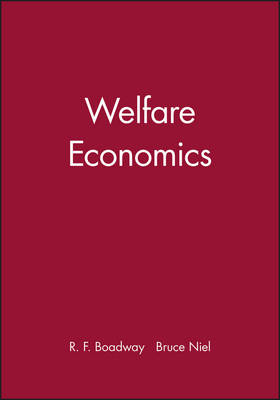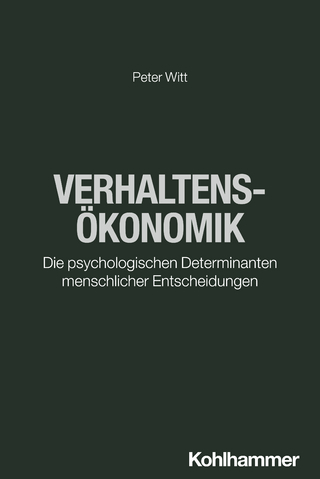
Welfare Economics
Wiley-Blackwell (Verlag)
978-0-631-13327-8 (ISBN)
This clear and balanced introduction to welfare economics reflects the most recent advances in the field. Designed for third-year undergraduate and graduate courses, it offers an extensive treatment of both the theory of welfare economics and the techniques for applying that theory to real problems.
The first part of the book presents a synthesis of the theory. Starting from the premise that the purpose of theory is to provide criteria for ordering alternative economic states, the authors analyse the relationship between individual and social orderings. They discuss the conditions of Pareto efficiency and optimality as well as the ways in which market economies may fail to achieve a Pareto optimal allocation of resources. They go on to evaluate the theory of social welfare functions, paying particular attention to recent developments.
The second part of the book considers the principles of applied welfare economics. Developing the use of the compensating variation as their main tool, the authors discuss welfare change measurement in single-person and many-person economies. In the final chapter they survey the recent literature on cost-benefit analysis.
Robin W. Boadway is Professor of Economics, Queen's University, Ontario, Canada and Neil Bruce is Professor of Economics, UCLA, USA.
1. The Descriptive Evidence, As We See It 3 A. Theoretical Context 3
B. Experimental Evidence 5
2. Methodologies of Behavioral Welfare Economics from Economists 9
A. Nudges and Boosts 9
B. Randomized Evaluations in Search of “What Works” 11
C. Behavioral Welfare Analysis Using “Frames” 12
D. Identifying the Inner Utility Function 16
E. Modeling Mistakes 17
F. Reduced Form Inferences 20
3. Behavioral Welfare Economics with the Quantitative Intentional Stance 22
A. The Intentional Stance 25
B. An Illustrative Application 32
C. Issues in the Application of the Quantitative Intentional Stance 37 Is Rationality Being Assumed? 37
Are We Assuming Some True Risk Preference? 40
Are We Assuming Stable Risk Preference? 42
What About Source-Dependent Risk Preference? 44
But Can’t I Just See What Works? 45
How Much Structure is Needed? 46
Why Just EUT and RDU? 48
Why Ignore Loss Aversion? 49
But There Is No Single, Correct Way to Elicit Risk Preferences 49
What About Subjective Probabilities? 49
What About Social Welfare? 50
4. Distinguishing Welfare from Well-Being 51
A. Well-Being and Reflective Rationality 51
B. Paternalism 57
5. Conclusions 68
References 76
| Erscheint lt. Verlag | 30.7.1984 |
|---|---|
| Verlagsort | Hoboken |
| Sprache | englisch |
| Maße | 172 x 246 mm |
| Gewicht | 539 g |
| Themenwelt | Wirtschaft ► Volkswirtschaftslehre ► Mikroökonomie |
| ISBN-10 | 0-631-13327-5 / 0631133275 |
| ISBN-13 | 978-0-631-13327-8 / 9780631133278 |
| Zustand | Neuware |
| Informationen gemäß Produktsicherheitsverordnung (GPSR) | |
| Haben Sie eine Frage zum Produkt? |
aus dem Bereich


